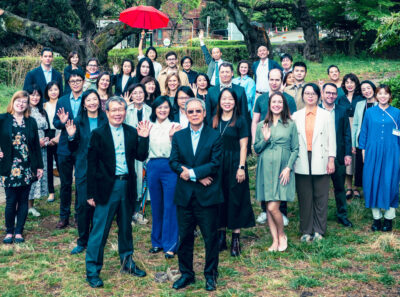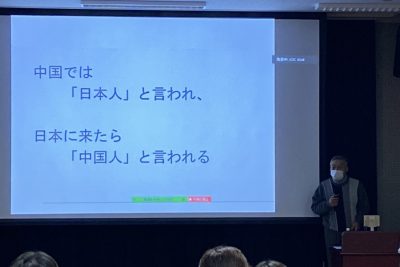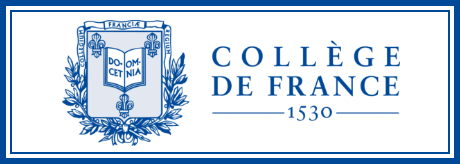Different Dimensions of Bilingualism (Part 1. of 2)

This blog post was created as part of the interdisciplinary zengaku seminar "Different Dimensions of Bilingualism" offered at the University of Tokyo during the 2023 academic year.
Dr. Lidiya Shamova(Instructor, Postdoctoral Fellow, Tokyo College)
What does it mean to be bilingual in a globalizing world? Where bilingualism meets culture, medicine, music, education, and business?
【Course Abstract】This course aims to present bilingualism from different points of view, focusing on the idea of interdisciplinarity between linguistics and other sciences. It discusses the world's transition from assimilation to multiculturalism. It reveals the main definitions of bilingualism, diglossia, and multilingualism. Specific cases from Japan and Europe illustrate the differences between three different bilingual-bicultural societies. One of the lectures focuses on the changes in the bilingual human brain. A separate class with an experimental part explains the connections between bilingualism and communication through music as a base for innovative research. The participants have the opportunity to listen to guest lectures regarding the importance of bilingualism in the field of business communication and to participate in a workshop on the methods used to teach the foreign language in a multilingual environment. At the end of the course, a workshop on conducting a multilingual anonymous survey and writing a scientific text is presented.
Based on the interdisciplinary approach of the course, the students had the opportunity to choose a topic and to write a short bilingual text.
We deeply appreciate the support of Tokyo College's team for giving this great opportunity to the students to publish their texts in the official blog of the organization.
===
Attempts to preserve Ainu language by SHIMIZU Takamoto(Undergraduate student, The University of Tokyo)
Ever since the Meiji government decided to rule Hokkaido, the indigenous Ainu language has fallen into a decline, and currently only 0.7% of people whose ancestors are Ainu are able to have conversations in the Ainu language (Kohri, 2018).
Given the graveness of this situation, multiple efforts are being made to preserve the Ainu language. One problem in its preservation process is that the audio materials of the Ainu language are kept separately in different areas. Therefore, the Japanese government is aiming to make it open to the public as an archive by digitalizing analog data and financially supporting the archiving project (Agency for Cultural Affairs, 2019). Another element of the Ainu language which makes it difficult to preserve is its lack of a unique set of letters (Kohri, 2018). Attempts are being made by the researchers and the Ainu themselves to express the language in written form (Nakagawa, 2006, 2-35).

Description: An example of Ainu language expressed in written forms
Source: https://note.com/qvarie/n/n37b9d7ed56a1
Although the current situation seems bleak, the increase in the number of people who study the Ainu language, albeit slightly, (Nakagawa, 2006, 36) gives a glimmer of hope. Even though we might not see the Ainu language flourish as much as before, the author is optimistic that people with unwavering passion would not let it die out for generations to come.
References
“アイヌ語の保存・継承に必要なアーカイブ化事業”, Agency for Cultural Affairs. 2019. https://www.bunka.go.jp/seisaku/kokugo_nihongo/kokugo_shisaku/kikigengo/archivejigyo/index.html (Accessed on Dec.18, 2023)
Kohri,Y., “0.7%の言葉 知ってほしい”, NHK.2018.https://www3.nhk.or.jp/news/special/miraiswitch/article/article3/ (Accessed on Dec. 18, 2023)
Nakagawa,H., “アイヌ人によるアイヌ語表記への取り組み”,『表記の習慣のない言語の表記』,Rokuichi Shobo.2006.http://www.aa.tufs.ac.jp/~asako/unwritten/01-nakagawa.pdf
=====
Bilingualism Delaying the Onset of Dementia by KATO Haruka(Undergraduate student, The University of Tokyo)
An increase in life expectancy has led to an upsurge in dementia prevalence,affecting an estimated number of 47 million people worldwide (Stephan et al. 2018. pp. 653-680). Despite the urgency of the situation, no definitive cure nor effective treatment has been presented thus far.
Recently, grey matter (GM) density and its relation to the progression of dementia has garnered interest among researchers. This is because GM is known to have an essential role in human performance as it is responsible for the processing and releasing of information, hence increased density signifies higher cognitive function (Mercadante and Tadi, 2023). Moreover, image mapping of GM density in dementia patients demonstrated that there was a significant loss of density intensifying with disease progression, specifically in the temporal and parietal regions as can be seen in figure 1 (Thompson et al. 2003, pp. 994-1005). A separate research study using a whole brain analysis technique found GM density to be greater, most prominently in the inferior parietal cortex, in bilinguals compared to monolinguals which is demonstrated in figure 2, as well as to have a positive correlation with the proficiency of a second language (Mechelli et al. 2004, pp.431-757). Therefore, a combined review of these findings suggests that GM density increased by bilingualism in the parietal region can directly affect the onset of dementia, which provides evidence for bilingualism to be considered a potential preventative measure against dementia.
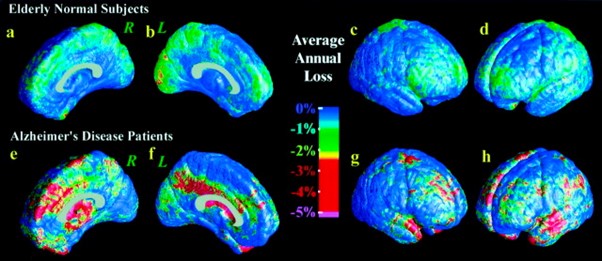
Figure 1. Brain image map demonstrating the average annual loss of GM density of normal subjects
(upper 4 images) and Alzheimer’s disease affected subjects (bottom 4 images) (Thompson et al. 2003, p. 994-1005)
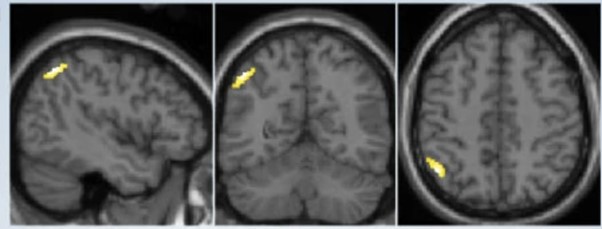
Figure 2. Brain image of left inferior parietal region with increased GM density in bilingual subjects (Mechelli et al. 2004, pp.431-757)
Although this kind of research presents hope in the search for dementia cures, difficulties such as the existence of multiple factors affecting GM density cannot be ignored. Yet, the author believes these findings are significant as it provides an alternative value to incorporate second language acquisition into an education system.
References
Mechelli, A. Crinion, T. Noppeney, U. O'Doherty, J. Ashburner, J. Frackowiak, R. and Price, C. Structural plasticity in the bilingual brain. Nature 431-757. Nature. 2004. https://www.nature.com/articles/431757a. Accessed: 26.12.2023
Mercadante A. Tadi P. Neuroanatomy, Gray Matter. StatPearls [internet]. National Library of Medicine. 2023. https://www.ncbi.nlm.nih.gov/books/NBK553239/ . Accessed: 26.12.2023
Stephan, B. Birdi, R. Tang, E. Cosco, T. Donini, L. Licher, S. Ikram, A. Siervo, M. Robinson, L. Secular Trends in Dementia Prevalence and Incidence Worldwide: A Systematic Review. Journal of Alzheimer's disease vol. 66, no. 2,. IOS Press. 2018. Pp. 653-680. https://content.iospress.com/articles/journal-of-alzheimers-disease/jad180375#ref001.Accessed: 26.12.2023
Thompson, P. Hayashi, K. Zubicaray, G. Janke, A. Rose, S. Semple, J. Herman, D. Hong, M. Dittmer, S. Doddrell, D. and Toga, A. Dynamics of Gray Matter Loss in Alzheimer's Disease. The Journal of Neuroscience. National Library of Medicine. 2003. Pp. 994-1005. https://www.ncbi.nlm.nih.gov/pmc/articles/PMC6741905/ . Accessed: 26.12.2023
=====
Monolingual ideology in English learning by ZANG Xilai (Undergraduate student, The University of Tokyo)
Monolingual ideology in second language education fosters second language anxiety and impedes effective English learning. Intertwined with "native-speakerism," it sets unrealistic standards for learners (Murata 2019, p.13), aspiring for “native-like” proficiency. This idealized notion of a "native speaker" generates feelings of inadequacy and shame among learners, often leading to second language anxiety (Galmiche 2017). In the meantime, it also leads to fear of negative evaluation and a perceived gap between actual and desired competence (Gregersen & Horwitz 2002). In fact, however, there is no "standard" English, as even prestigious dialects like American or British English exhibit significant internal diversity., as we could see in figure 1:

(Figure 1: Trudgill 1999, p34)
Moreover, the traditional approach of English education treats the learner's mother tongue as a hindrance (Phillipson 1992), which ignores the dynamic and diverse nature of English as a lingua franca – it is now used globally by people of various cultural backgrounds (Gibson 2011). Therefore, communicative efficacy should be emphasized over linguistic authenticity. A pedagogical shift towards a more pluralistic and dynamic view of language use, recognizing the value of multilingual competence and the communicative capabilities of non-native speakers, is expected.
In short, monolingual ideology creates a hierarchy of languages, marginalizing non-native speakers. Instead, English as a lingua franca should be adopted as a perspective which acknowledges the multilingual and multimodal resources of different speakers, encouraging the use of first languages and even non-verbal cues for effective communication, so that intercultural communication can be fostered.
References
Galmiche, D. (2017). Shame and SLA. Apples: journal of applied language studies, 11, 25-5A3.
Gibson, F., Barbara Seidlhofer: Understanding English as a Lingua Franca. Oxford University Press, 2011., Applied Linguistics, Volume 33, Issue 4, September 2012, Pages 463–465, https://doi.org/10.1093/applin/ams035
Gregersen, T., & Horwitz, E. K. (2002). Language Learning and Perfectionism: Anxious and Non-Anxious Learners’ Reactions to Their Own Oral Performance. Modern Language Journal, 86, 562-570.
Murata, K. (2019). The realities of the use of English in the globalised world and the teaching of English: a discrepancy?. Jacet journal, 63, 7-26.
Phillipson, R. (1992). ELT: the native speaker's burden?. ELT journal, 46(1), 12-18.
Trudgill, Peter. (1999). The dialects of England. 2nd rev. ed. Oxford: Blackwell
=====
Continues to part 2 of 2.


